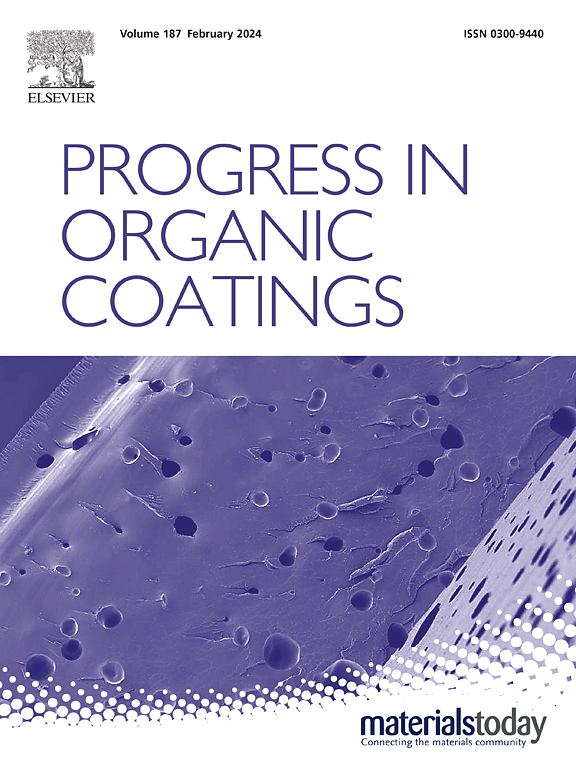Dual-denatured protein for phytate-based systems: Purely bio-based coating featuring high flame retardancy and low hygroscopicity
IF 6.5
2区 材料科学
Q1 CHEMISTRY, APPLIED
引用次数: 0
Abstract
To construct a high flame retardant and low moisture absorption biomacromolecule, a bio-based covering was created by combining phytic acid, whey protein, and chitosan. The bio-based flame retardant coating was applied to the wood surface employing water evaporation laminating. Structural investigation of the products of phytic acid and whey protein under heating conditions revealed that the products experienced dual-denatured, namely heat denaturation and acid denaturation. The secondary structural modified in whey protein, including disruption of the spatial structure and peptide bond cleavage. The limiting oxygen index of poplar veneer increased by 22.9 % after flame retardant treatment compared to the pure phytic acid control group. The flame retardant layer provides flame retardancy in both the gas and condensed phase dimensions, thereby considerably increasing the flame retardant performance of composite materials. Covering the coating surface with chitosan film can greatly reduce the hygroscopic defects of phytate-based flame retardants, with the film-coated sample PPCW exhibiting a hygroscopic inhibition rate of 46.92 % after 24 h. Furthermore, this type of treatment can significantly improve the surface coating of water-based paint after utilizing phytic acid-based flame retardants. The hydrogen bonding polymerization of phytic acid-based biomacromolecule has a great potential for use in flame retardant treatment.

求助全文
约1分钟内获得全文
求助全文
来源期刊

Progress in Organic Coatings
工程技术-材料科学:膜
CiteScore
11.40
自引率
15.20%
发文量
577
审稿时长
48 days
期刊介绍:
The aim of this international journal is to analyse and publicise the progress and current state of knowledge in the field of organic coatings and related materials. The Editors and the Editorial Board members will solicit both review and research papers from academic and industrial scientists who are actively engaged in research and development or, in the case of review papers, have extensive experience in the subject to be reviewed. Unsolicited manuscripts will be accepted if they meet the journal''s requirements. The journal publishes papers dealing with such subjects as:
• Chemical, physical and technological properties of organic coatings and related materials
• Problems and methods of preparation, manufacture and application of these materials
• Performance, testing and analysis.
 求助内容:
求助内容: 应助结果提醒方式:
应助结果提醒方式:


